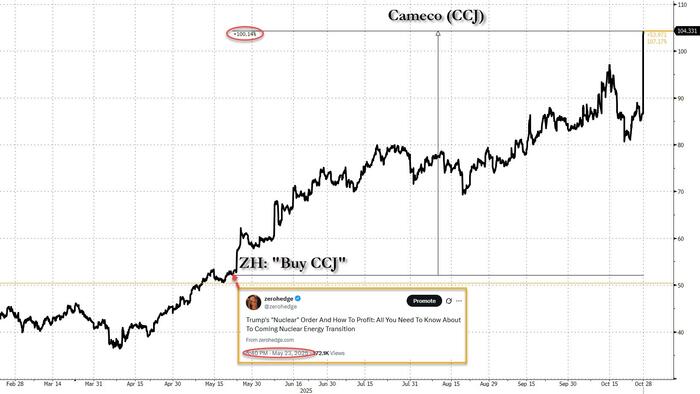Copyright forbes

Cyber threats don’t knock on the door. They hide behind familiar faces. In today’s digital world, the scariest masks are the ones we cannot see. Getty Images Every October we stock up on candy, put on spooky costumes and prepare for ghosts and goblins. But this year the real horror show is not at the front door. It is in the cloud, in the network and in the boardroom where systems fail, data leaks and contracts disappear. These are not make-believe monsters. They are the daily realities of cybersecurity, compliance and risk. Let’s walk through the nightmare scenes already playing out across the digital world. Horror Story No. 1: The Data Breach Nightmare In 2025 the world saw another surge of catastrophic data breaches. In June, cybersecurity researchers uncovered one of the largest credential leaks ever recorded, exposing more than 16 billion usernames and passwords tied to Google, Apple and corporate portals across multiple industries. A month later, Qantas Airways confirmed that personal data from 5.7 million customers had been compromised, including birth dates, phone numbers and home addresses. These incidents showed that the breach you fear may not begin in your system. It may come from a supplier, cloud service, or third-party contractor. Too many organizations still treat cybersecurity as optional. When that digital door opens, what steps through is exposure, liability and lost trust. Horror Story No. 2: The Romance Hack Terror Cybercriminals continue to exploit people, not just technology. The hacking group Scattered Spider, linked to multiple large-scale incidents, has used emotional manipulation and social engineering to compromise corporate credentials in industries from airlines to telecommunications. The FBI recently warned that these romance-style attacks are escalating. It starts with an innocent message, a friendly exchange, or a flirtatious chat. Before long, the target shares credentials or clicks a poisoned link that opens a path into the corporate network. These attacks do not depend on ransomware or brute force. They depend on trust and trust remains the weakest link. Once an attacker has access, the results are identical to a full breach. The scariest part is how quiet it all seems until it is too late. MORE FOR YOU Horror Story No. 3: The Terrorist Hack State-sponsored and terrorist-affiliated hacking groups have moved from theory to practice. In 2024, a Chinese espionage group known as Salt Typhoon infiltrated a U.S. Army National Guard network, stealing administrator credentials and network diagrams over a nine-month period. Critical infrastructure, ports and defense suppliers have all been targeted in similar operations. These groups operate quietly, often remaining undetected for months. They collect credentials, implant persistence mechanisms and exfiltrate sensitive data long before anyone notices. For critical infrastructure industries, defense contractors and national security suppliers, this is not a hypothetical threat. It is the new frontline of modern conflict and the battlefield is digital. Horror Story No. 4: The Compliance Graveyard For Defense Contractors For the roughly 80,000 defense contractors serving the newly named Department of War, the real nightmare begins when compliance fails. A recent Merrill Research study found that only 1 percent of contractors feel fully prepared for upcoming Cybersecurity Maturity Model Certification audits. Many have yet to submit Supplier Performance Risk System scores, deploy multi-factor authentication, or close open Plan of Action and Milestones items. Despite the government shutdown, the Defense Industrial Base Cybersecurity Assessment Center has been rumored to already be prepared to step up enforcement audits. Failing a DIBCAC assessment can result in suspension of contract eligibility and loss of funding. Even worse, recent False Claims Act cases, such as Aerojet Rocketdyne in 2022 and Comstor 2023, show that misleading the government about cybersecurity compliance, or otherwise carries severe financial penalties and reputational damage. In the Aerojet case, the company paid $9 million to settle claims of misrepresenting compliance with defense cybersecurity requirements. These precedents make it clear that ignoring CMMC obligations is no longer a paperwork problem. It is a legal and financial risk with career-ending consequences. What happens when that renewal notice arrives and your compliance gaps block your bid? The horror is not an email from a hacker. It is the realization that non-compliance just cost you the contract. The window to act is closing and the era of “we will get to it later” is over. But Not Every Story Ends In A Haunted House Some organizations are not living in the dark. They are proving that discipline, investment and testing can turn fear into confidence. These companies treat cybersecurity and compliance as foundational, not optional. They share common traits that keep them safe when others panic. Active-Active Deployments Across Regions And Providers: They run key workloads in parallel so that the failure of one region never means downtime. Edge Diversification And Alternate Routing: They avoid relying on a single content delivery network or provider, maintaining pre-tested failover paths. Separate Identity And Administrative Access: They isolate identity systems so that when other layers fail, they still control access, revoke tokens and minimize damage. DNS Resilience And Traffic Redirection: They use multiple DNS providers, short TTLs and automated health checks to redirect traffic in real time. Frequent Disaster Recovery Tests: They simulate regional outages and CDN failures under real conditions to validate team response and restoration speed. Backups Isolated From Shared Blast Zones: Their immutable backups live in separate regions and accounts, independent from production and unaffected by shared control planes. Independent Monitoring Beyond Vendor Dashboards: They rely on third-party telemetry and synthetic testing to detect problems before the vendor’s status page updates. CMMC-Grade Compliance And Audit Readiness: For the defense industrial base, they maintain CMMC Level 2 certification, verified SPRS scores, multi-factor authentication and detailed vulnerability management documentation. These are not best practices on paper. They are battle-tested shields against real-world chaos. The Final Trick Or Treat Choice In an age of AI-driven attacks, ransomware and escalating compliance demands, every organization faces a choice. You can be the one handing out treats or the one haunted by missed preparation. The breaches and penalties making headlines tomorrow often start with the small oversights we ignore today. Choose to be ready. Choose to plan. Choose to build resilience so that when the next outage or audit arrives, you keep your systems running, your contracts active and your reputation intact. When the lights flicker and the ghosts start howling, you do not want to be looking for your flashlight. You want your defenses already shining bright. Editorial StandardsReprints & Permissions



